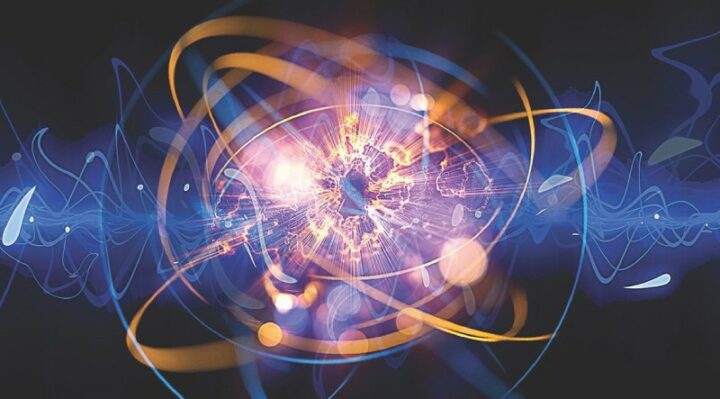
A year after virtually ruling out the possibility, two Dutch and Japanese theoretical physicists have discovered that quantum entanglement shares a fundamental property with the physics of steam engines, drying socks, and maybe even time travel.
If this universal quality is real, as they claim, then it would control all transformations between entangled systems and allow physicists to quantify and compare entanglement in ways other than counting qubits, as well as understand the boundaries of their ability to manipulate entangled pairs.
Along with superposition, quantum entanglement—the propensity for the quantum fuzziness of distinct objects to mathematically merge—is a basic component of quantum computing. When two or more particles, atoms, or molecules are entangled, understanding one reveals information about the other.
Physicists’ main issue in their effort to fulfill those computer fantasies has been figuring out how to entangle two particles without disturbing them so they don’t fall apart and can successfully transport data over long distances.
However, little attention has been paid to whether or not entangled particles can change from one quantum state to another, how challenging that would be, how many potential configurations there are, and whether or not the entanglement process is ultimately reversible.
Reversibility in thermodynamics refers to perfect processes that can be undone in a way that essentially leaves the system and the universe untouched. A piston, for instance, can be propelled by heating water to the point of steam, and steam can be forced back into a heated liquid condition by applying pressure to it.
If it is possible to reverse entangled states, even in theory, it suggests that there may be more parallels between quantum physics and thermodynamics than meets the eye.
Scientists Bartosz Regula from the RIKEN Center for Quantum Computing in Japan and Ludovico Lami from the University of Amsterdam collaborated on the project. “Our work serves as the very first evidence that reversibility is an achievable phenomenon in entanglement theory,” the researchers claim.
“This not only has immediate and direct applications in the foundations of quantum theory, but it will also help with understanding the ultimate limitations on our ability to efficiently manipulate entanglement in practice,” Regula says.
The second law of thermodynamics states that reversible processes are impossible in the real world. It can be summed up as follows: in a closed system, any new state will probably not contain all the energy needed to fully reverse after a change, according to the idea of entropy.
Would you like that piston to go the other way? You’ll have to bring energy in from another source. The universe’s entropy will always rise since it is a closed system that is unable to obtain energy from outside sources.
Since entropy and reversibility have a close relationship in thermodynamics, finding a similarity in entanglement may have significant effects on our comprehension of quantum changes.
In order to determine the ‘entropy’ of entanglement, Regula and Lami needed to demonstrate that entanglement transformations may be rendered reversible, akin to the conversion of work and heat in thermodynamics.
Regula and Lami, who last year declared there was “no second law of entanglement manipulation after all,” have suddenly reversed course and suggested that there may be some sort of “entropy” of entanglement. Their study was published in Nature Physics.
It would be impossible to change a quantum state or resource from one to the other as entangling particles would always produce some loss of this entanglement, which could never be entirely regained. This was the conclusion reached by the two.
“We can conclude that no single quantity, such as the entanglement entropy, can tell us everything there is to know about the allowed transformations of entangled physical systems,” Lami stated at the time.
However, those results did not stop them. Instead, they believed it to imply that the traditional rules of thermodynamics were much simpler than any cohesive explanation of entanglement, if any existed at all. So they continued to crunch numbers.
With their most recent offering, they hint at the possibility of a reversible framework for entanglement, but with higher power and limited functionality due to probabilistic entanglement transformations.
Regula concedes, however, that proving the practical feasibility of transformations of entangled particles—rather than merely proving their statistical plausibility—requires solving mathematical puzzles “that have evaded all attempts at solving them thus far.”
Furthermore, the pair’s study differs from earlier attempts to identify specific quantum transformations in that it only takes into account changes that have a chance of occurring, regardless of how remote those chances may be. Therefore, in practical applications, these probabilities might not be sufficient to prove the existence of recurrent, reversible transformations of entangled states.
“Understanding the precise requirements for reversibility to hold thus remains a fascinating open problem,” explains Regula.



